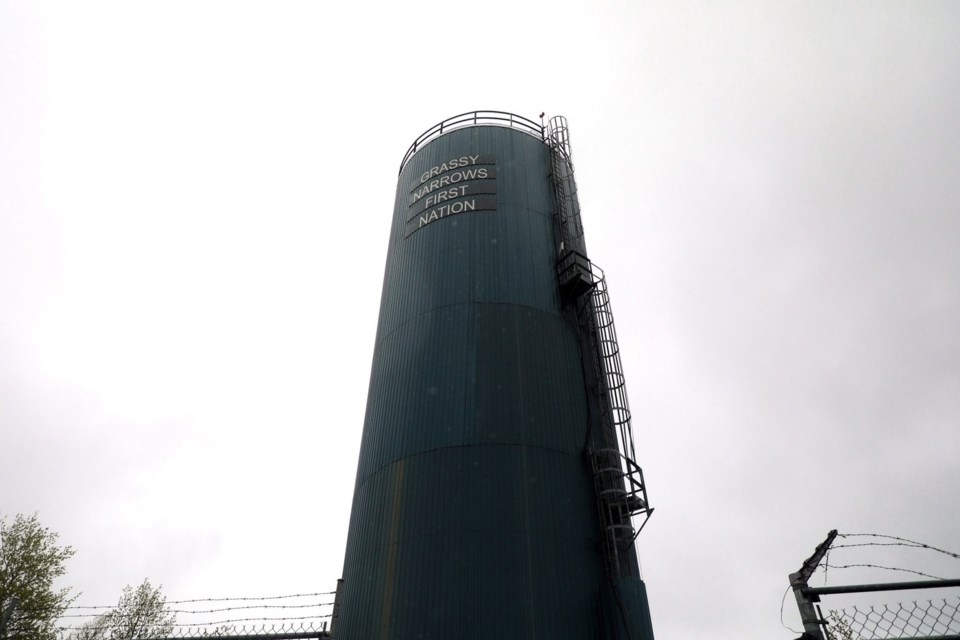Industrial discharge from a paper mill in northern Ontario is exacerbating mercury contamination in a river system near a First Nation that has been plagued with mercury poisoning for decades, a new study suggests.
While the wastewater from the Dryden, Ont., mill doesn't contain mercury, the sulphate and organic matter in it contribute to the elevated production of methylmercury in the Wabigoon River, researchers from Western University said Thursday.
The levels of methylmercury — the most toxic form of mercury — in the river's fish may be twice as high as they would be without the mill discharge, they said.
"The mill operations today are making the methylmercury contamination problem worse in the Wabigoon River and delaying the recovery of mercury contamination and fish in that system," said Brian Branfireun, who led the research team.
The mill is upstream of the Grassy Narrows First Nation, a community of fewer than 1,000 people near Ontario’s boundary with Manitoba.
The community's water was contaminated when the mill dumped 9,000 kilograms of mercury into the English-Wabigoon River system in the 1960s. The mill stopped using mercury in its industrial process in the 1970s, but mercury levels downstream of the plant haven't decreased significantly since the 1980s.
One study estimated that 90 per cent of the Grassy Narrows population suffers from some degree of mercury poisoning. The heavy metal can be passed from mothers to babies they carry, making it a problem that spans generations.
Grassy Narrows Chief Rudy Turtle said the province assured them it was making sure the wastewater was safe, and it's "heartbreaking" to learn that wasn't the case.
"This has made our suffering worse and it has to stop. We need justice, not more poisoning," he said in an email.
"The government allowed this mess to be created and now it must fix it. The pollution must stop and the river must be cleaned up. We need fair compensation for all of Grassy Narrows so that we can restore our well-being and our way of life."
A spokesman for the Ontario Ministry of Environment, Conservation and Parks said it will continue to work with the mill owner and Indigenous communities affected by mercury contamination in the area.
Ministry technical experts are reviewing the report and plan to meet with Branfireun and Indigenous communities next week, Gary Wheeler said in an email.
As well, the report will be shared with a team of experts tasked with developing a conceptual site model for the river system and incorporated into that team's final report, he said.
Dryden Fibre Canada, which took ownership of the mill last August, said it cares "deeply" about the issue but needs to review the report before commenting further.
The mill said it received a copy Thursday afternoon, but the researchers said they gave the mill owners, the government and other English and Wabigoon River First Nations the document last week.
Branfireun said the river system is not recovering and still has the highest mercury in fish in Ontario.
"We're pointing at this as an explanation for why those fish mercury (levels) are still high," he said.
If the sulphate and organic matter going into the river are reduced, there could be a rapid decrease in mercury concentrations in fish, though that won't resolve the existing contamination in the environment, he said.
"There's some evidence from other experiments that have been done in North America that that timeline might be in the order of years, as opposed to decades of recovery if we're talking about a more traditional remediation strategy, which will ultimately need to be forthcoming as well," he said.
The study was commissioned by Grassy Narrows First Nation and its results were released Thursday "because of the urgency of the situation," Branfireun said.
"Every minute that there is additional discharge of the sulphate and organic matter into this river, more methylmercury is being formed."
This report by The Canadian Press was first published May 23, 2024.
Paola Loriggio, The Canadian Press




